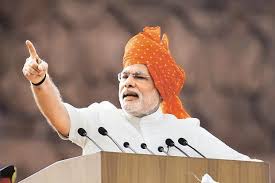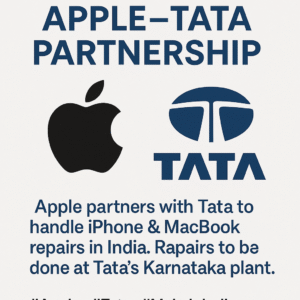Major Reforms by Modi Government: Transforming India’s Economic and Social Landscape

Since 2014, the Narendra Modi-led government has embarked on an ambitious journey to overhaul India’s economic, social, and governance frameworks. Through a series of major reforms, the government has sought to modernize outdated systems, empower citizens, and position India as a global leader in innovation and sustainability. Among the most significant of these reforms are the simplification of labor laws, the launch of the PM-KISAN scheme for farmers, the expansion of Direct Benefit Transfer (DBT), a massive push for renewable energy, and the consolidation and recapitalization of public sector banks. This article explores these five landmark reforms, their context, implementation, impact, and the challenges that remain.
1️⃣ Labor Code Reforms: Simplifying and Modernizing India’s Labor Laws
The Need for Reform
For decades, India’s labor landscape was governed by a complex web of 29 central laws, many dating back to the colonial era. These laws, often overlapping and contradictory, created confusion for employers and workers alike, hampered industrial growth, and discouraged investment. Compliance was cumbersome, and the infamous “Inspector Raj” led to red tape and corruption.
The Four Labor Codes
Recognizing these challenges, the Modi government undertook the most comprehensive labor reforms in independent India’s history. In 2020, Parliament passed four new labor codes that subsumed the 29 existing laws:
- Code on Wages
- Code on Industrial Relations
- Code on Social Security
- Code on Occupational Safety, Health and Working Conditions
These codes aim to simplify compliance, ensure timely payment of wages, universalize minimum wages, and extend social security to all workers—including those in the informal and gig economy.
Key Features and Impact
- Ease of Doing Business: One registration, one license, and a single return for all codes have streamlined processes for businesses, reducing compliance burdens and promoting investment.
- Worker Protection: The codes guarantee minimum wages, timely payments, and prioritize occupational safety. Social security benefits are extended to all, including fixed-term and unorganized sector workers.
- Technology-Driven: The reforms harness technology for better compliance, transparency, and delivery of benefits.
- Collaborative Approach: The government has worked closely with states, labor unions, and employers to harmonize implementation and address concerns.
Challenges and Criticisms
While the reforms promise long-term benefits, implementation has faced delays and resistance from some unions concerned about potential dilution of workers’ rights. Ensuring smooth rollout across states and sectors remains a work in progress.
2️⃣ PM-KISAN: Direct Income Support for Farmers
Background and Launch
Agriculture remains the backbone of India’s economy, supporting nearly half the population. Yet, small and marginal farmers have long struggled with low incomes, debt, and vulnerability to market and climate shocks. To address these issues, the Modi government launched the Pradhan Mantri Kisan Samman Nidhi (PM-KISAN) scheme in 2019.
How PM-KISAN Works
Under PM-KISAN, eligible farmers receive ₹6,000 per year, credited directly to their bank accounts in three equal installments. The scheme is designed to supplement farmers’ income, help them procure inputs, and stabilize rural livelihoods.
Scale and Impact
- Massive Reach: Over 9.8 crore farmers, including 2.4 crore women, benefited from the 19th installment in February 2025. The 20th installment is due in June 2025.
- Transparency: Payments are made through the DBT mechanism, minimizing delays and leakages.
- Economic Security: The scheme has become the world’s largest direct benefit transfer program by scale, providing a safety net and reducing dependence on informal credit.
Challenges
Ensuring that only eligible farmers receive benefits, updating e-KYC, and reaching the most marginalized remain ongoing priorities.
3️⃣ Direct Benefit Transfer (DBT): Revolutionizing Welfare Delivery
The Old System
Before DBT, welfare schemes were plagued by inefficiency, misidentification of beneficiaries, and corruption by intermediaries. Funds often failed to reach the intended recipients, resulting in massive leakages and fiscal waste.
The DBT Revolution
Launched in 2013 and aggressively expanded post-2014, DBT re-engineered welfare delivery by transferring subsidies and benefits—such as LPG, ration, pensions, and scholarships—directly to beneficiaries’ bank accounts, often linked with Aadhaar for accurate targeting.
Achievements
- Savings: DBT has saved ₹3.48 lakh crore by reducing leakages and eliminating ghost beneficiaries.
- Efficiency: The share of subsidies in total government spending fell from 16% in 2009 to 9% in 2024, even as welfare budgets quadrupled.
- Scale: Beneficiary coverage expanded 16-fold, from 11 crore to 176 crore people.
- Transparency: JAM Trinity (Jan Dhan, Aadhaar, Mobile) enabled precise targeting and accountability.
Case Study: LPG Subsidy (PAHAL)
The DBT for LPG (PAHAL) scheme ensures that domestic LPG consumers receive subsidies directly, eliminating fake connections and improving delivery.
Broader Impact
DBT has redefined welfare governance, harmonizing fiscal prudence with social equity and restoring dignity to millions of Indian families.
4️⃣ Renewable Energy Push: Powering a Green Revolution
The Vision
India’s commitment to sustainability and climate action has been a hallmark of the Modi era. The government set ambitious targets: 175 GW of renewable energy capacity by 2022, rising to 500 GW by 2030.
Achievements
- Historic Growth: As of March 2025, India’s installed renewable energy capacity reached 220.10 GW, up from 198.75 GW the previous year.
- Solar Power Leadership: Solar energy led the expansion, with 105.65 GW installed—including ground-mounted, rooftop, and hybrid projects.
- Wind and Bioenergy: Wind capacity reached 50.04 GW, and bioenergy installations stood at 11.58 GW.
- Innovation: Rooftop solar, wind-solar hybrids, and bioCNG blending in transport and households are being aggressively promoted.
Global Impact
India is now a global leader in solar power, ranking among the top three countries for renewable capacity additions. The sector has generated millions of jobs and attracted billions in investment91011.
Challenges
Land acquisition, grid integration, and import dependence for solar modules (mainly from China) remain key hurdles. However, the government’s focus on domestic manufacturing and innovation is addressing these issues.
5️⃣ Bank Mergers & Recapitalization: Strengthening the Financial Sector
The Pre-Reform Scenario
India’s public sector banking landscape was long characterized by fragmentation, inefficiency, and mounting non-performing assets (NPAs). Multiple small banks struggled to compete, manage risk, or finance large projects.
The Modi Government’s Response
- Mega Mergers: In 2020, the government announced the biggest consolidation in Indian banking history, merging 10 public sector banks into four larger entities. This followed earlier mergers involving SBI and its associates, as well as Dena Bank and Vijaya Bank with Bank of Baroda.
- Recapitalization: The government infused capital to strengthen bank balance sheets and ensure stability.
Impact
- Reduced NPAs: Mergers helped absorb weaker banks, improve asset quality, and lower bad loans14.
- Efficiency: Larger banks benefit from economies of scale, better risk management, and the ability to finance big projects.
- Global Competitiveness: Consolidation has created stronger banks capable of competing internationally14.
- Financial Inclusion: Enhanced governance, technology adoption, and credit discipline have improved access to banking for millions.
Ongoing Reforms
The government continues to monitor and support public sector banks, with a focus on governance, digital transformation, and responsible lending.
Conclusion: A Decade of Transformation
The Modi government’s major reforms have fundamentally reshaped India’s economic and social landscape. By simplifying labor laws, empowering farmers, revolutionizing welfare delivery, championing renewable energy, and strengthening the banking sector, these initiatives have laid the groundwork for sustained growth, greater equity, and global leadership.
While challenges remain in implementation, inclusivity, and adaptation to changing global dynamics, the direction is clear: India is on a path to becoming a more efficient, transparent, and resilient nation. As these reforms mature, their true impact will be measured not just in statistics, but in the improved lives and opportunities of India’s 1.4 billion citizens.



